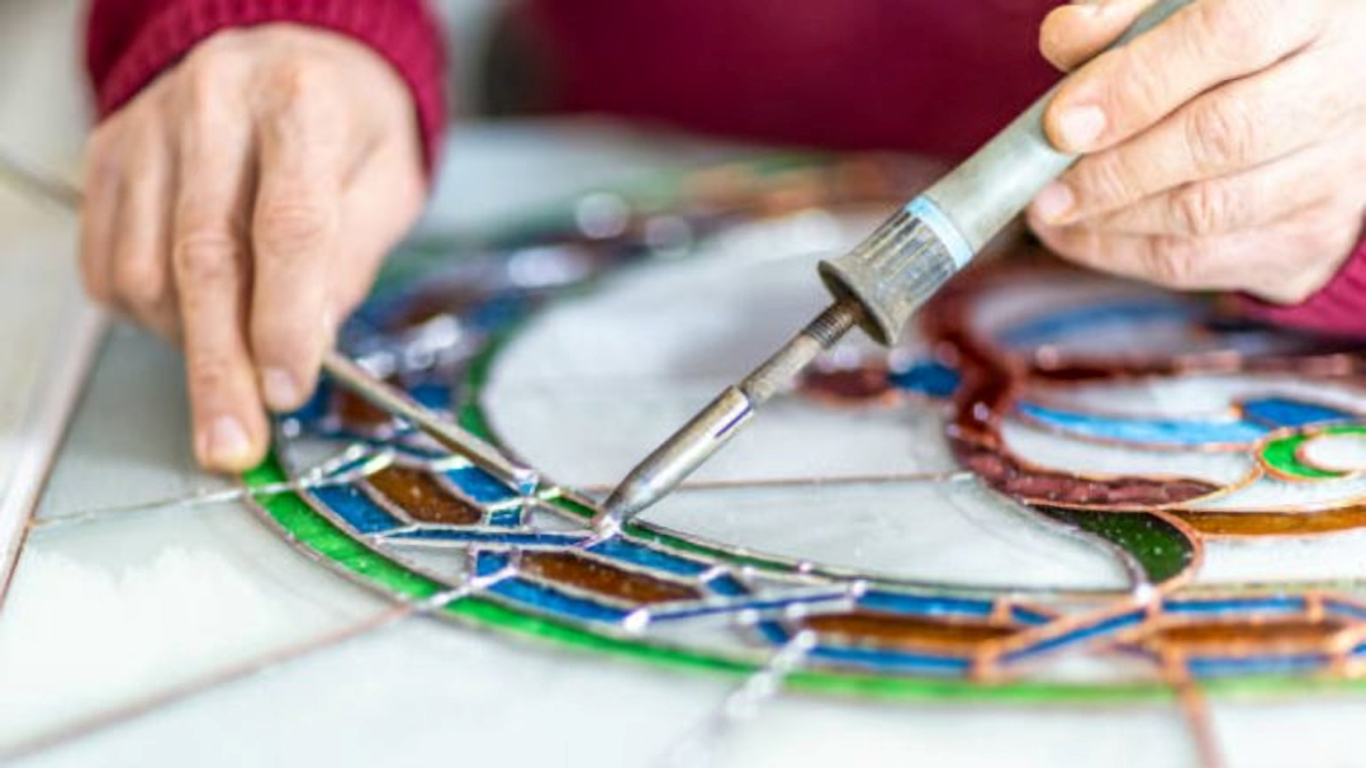The first time I picked up a soldering iron, I was terrified. I’d watched the videos, read the tutorials, even lurked in a couple of stained glass forums. It all looked smooth and effortless. But then it was my turn?
Wobble. Burn. Splatter. Curse. Splatter
My first solder joint wasn’t just bad—it was bulbous and lumpy, like a glob of silver chewing gum had melted and wept down the seam. It didn’t stick properly. The lines weren’t even close to straight. And the piece I was trying to hold together kept popping apart like rebellious puzzle pieces that refused to cooperate.
I sat there staring at it, a tangled mess of metal and glass, and seriously considered giving up before I’d even begun.
But here’s the thing: I couldn’t walk away.
Even though the result was rough, something about the process grabbed me. It was the thrill of watching things come together with brightly coloured glass and molten metal. The weird satisfaction of coaxing molten solder into a line. Even though it looked terrible, I had made something. Something that glowed when the light hit it. Something with potential.
I was hooked.
That First Wobbly Joint: What Went Wrong
Looking back now, it’s clear I made every classic beginner mistake:
My soldering iron wasn’t hot enough.
I didn’t clean the copper foil properly.
I used way too much flux in some spots and not enough in others.
I hovered with the iron instead of moving fluidly.
I tried to “paint” the solder on like oil paint, going over and over the same spot.
And worst of all, I was nervous. Really nervous. Soldering rewards confidence. It’s a little like dancing: hesitate and you trip. Try too hard to control it, and you lose the rhythm.
Mistakes That Made Me a Better Artist
But here’s the cool part: each mistake became a stepping stone.
I learned the importance of pre-tinning my iron. Of trusting the heat to do the work. Of pressing down just enough—not too much, not too little. I learned to let the solder flow instead of forcing it.
Every burn mark on my workbench (and finger), every little splatter on the glass taught me something. I started watching how other artists moved when they soldered. There’s a rhythm to it, like a silent song that your hand learns to dance to over time.
Eventually, my solder lines started to look less like worms and more like rivers.
Tips I Wish I Knew on Day One
Here’s the short list of what I wish someone had told me before I plugged in my first iron:
- Get a quality iron with temperature control. A consistent 370 – 400 °C is the sweet spot for most solders.
- Clean everything before you solder: your copper foil, your glass edges, your iron tip.
- Use the right flux (and not too much). Too little, and your solder won’t flow. Too much, and it becomes sticky chaos.
- Start with short seams to build confidence.
- Practice on scrap. Get the feel for how solder moves before trying it on a real piece.
- Don’t panic if it blobs. Just reheat gently and spread. Solder is forgiving if you let it be.
- Wipe your iron often. A clean tip is a happy tip.
The Psychology of Soldering
Here’s something people don’t talk about enough: soldering isn’t just a technical skill. It’s mental.
If you approach it scared, the solder doesn’t flow smoothly. If you rush it, the seams look frantic and you get gaps. If you’re in a calm, focused state, your lines flow like silk.
I learned to make soldering a ritual. I set up my space carefully. I play music that keeps my pace steady. I breathe, I smile, and I remember that it’s okay to mess up.
What a Good Solder Line Feels Like
When it clicks, you’ll know.
The solder glides from the tip like honey. It forms a smooth bead that hugs the foil. It’s almost meditative. You stop thinking and just flow.
When you get there, it’s magic. But it takes time to be consistently magical.
Encouragement for Every Beginner
If your first solder joint was a disaster, don’t worry – most are.
That means you’re learning. That means you’re in the messy, beautiful middle of becoming an artisan.
Everyone starts with a mess. Everyone has a drawer full of awkward, crooked, slightly embarrassing first projects. Those pieces are precious. They’re proof that you showed up. That you tried. That you’re building something real.
So don’t toss out your first soldered piece. Hang it in your window. Let it remind you how far you’ve come. Let it catch the light and throw it back into the room, even if the lines are wonky, the corners are lumpy, there’s holes and a couple of pieces are cracked.
Because the truth is, every perfect piece you’ll ever make will stand on the shoulders of that first disaster.
And that’s more than okay.
That’s wonderful.
